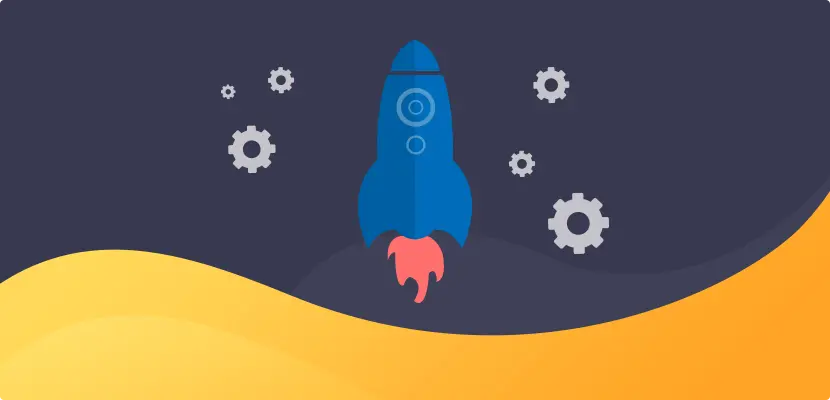The Impact of CS in Today’s Businesses
In today’s dynamic business landscape, Customer Success takes center stage, captivating the focus of 72% of companies committed to enhancing this critical aspect [2]. The impact of Customer Success is nothing short of transformative, validating the strategic emphasis on nurturing robust Customer Success teams.
Dive into the world of Customer Success Managers (CSMs), the architects of a positive customer experience, wielding the dual power of account retention and growth. Remarkably, 86% of buyers are willing to pay a premium for an enhanced Customer Experience, positioning CSMs as a potent force in revenue generation [2]. Often labeled as firefighters, CSMs adeptly handle product fires and deftly navigate the high expectations set by the Sales team.
Fostering exceptional CSMs demands a nuanced approach, particularly for small to medium-sized businesses (SMBs). A prudent investment in customer success, hovering around 10-20% of Annual Recurring Revenue (ARR), establishes a benchmark range aligning investment with growth [3]. Moreover, the rise of AI in customer success, where 66% of CTOs and CIOs said using AI for Customer Success is a top priority over the next several years, adds a noteworthy dimension [4].
Unveiling a fascinating revelation, a study by Bain & Co. underscores that robust customer success programs, harmonized with key account management, can catapult profits by a staggering 95% [1]. The business landscape, marked by an 88% prioritization of customer experience in contact centers [4], underscores the pivotal role of Customer Success Managers in sculpting a positive customer journey and ensuring enduring loyalty.
Yet, the synergy between Customer Success Managers and AI programs, while notable, pales in significance compared to the delicate alignment between Product Teams and Customer Success. A CSM truly flourishes when supported by tools and internal processes, a recipe that yields remarkably low churn rates, often dipping below 1% [2].
The CSM Profile
The ideal Customer Success Manager (CSM) often embodies superhuman qualities. They must navigate complex tasks: cultivating trust with clients, managing product expectations, mitigating setbacks, and advancing both their own and the client’s objectives simultaneously.
Hiring for such a multifaceted role isn’t straightforward. While prioritizing relevant skills is helpful, the search remains challenging. CSMs must be both people-oriented and technically savvy, capable of deep-diving into issues while maintaining a high-level perspective. They should balance analytical prowess with strategic thinking and display empathy alongside revenue-focused decision-making. This blend of creativity and logic is what makes a CSM effective.
In the quest for top-tier Customer Success talent, clarity about your team’s needs is vital, and time is of the essence. Strong candidates are quickly snatched up in the competitive job market- particularly now that international hiring is more feasible than ever before. In the SaaS industry, where customer retention is paramount, the average churn rate stands at 5.33%. However, smaller businesses with sales under $10 million grapple with a median annual churn rate of 20% [2]. The stark reality is that improving customer retention by a mere 5% can bolster profits by a staggering 95% [2]. This underscores the critical role of CSMs in curbing churn and enhancing the bottom line.
Talent Acquisition Challenges
1. Culture fit awareness
In the pursuit of recruiting an ideal Customer Success Manager (CSM) for both the role and the team, numerous challenges invariably surface. Despite the meticulous analysis and planning entailed in the hiring process, a host of novel intricacies often come to light during interviews.
The inherent beauty and challenge of this endeavor stem from the fact that virtually anyone can assume the mantle of a CSM. The nature of this role is so multifaceted that crafting a specific checklist of requisite professional experiences, educational backgrounds, or personality traits proves an elusive task.
I’ve engaged with candidates spanning diverse spectrums—ranging from those accustomed to more technical products, to seasoned professionals adept in relationship management, and to versatile individuals adept at juggling multiple roles, navigating adeptly through ambiguity and pressure. While delineating the characteristics integral to the role is relatively straightforward, what I perhaps underestimated earlier in my career was the paramount importance of culture fit. Each team and company possesses its unique dynamics, behavioral patterns, and specific needs.
Instances abound where new hires struggled to assimilate despite possessing the technical skills, and conversely, where team members overcame their lack of experience through a positive attitude. Unearthing an optimal fit for the team involves a nuanced interplay of various factors, with culture fit occupying a pivotal position in the interviewing process. I’ve observed that companies fervently embodying their core values tend to attract candidates who inherently resonate with those values, resulting in a higher likelihood of not only successful interviews but also subsequent talent retention.
2. Inadequate Job Descriptions
I highlighted earlier the critical significance of conducting a meticulous needs analysis tailored to the unique demands of the role we’re aiming to fill. Before unleashing the Job Description into the digital domain, it’s beneficial to reflect on your team, gauge the current stage of the company, and envision who would truly thrive in this role. Base the job description on this envisioned profile, iterating through a few versions.
During the iterative process, consider the potential drawbacks of the description. Ask yourself who might get excluded due to certain requirements and whether those requirements need modification or reordering in terms of priority. While there’s undoubtedly an ideal candidate envisaged during the crafting of the job description, ensure that the criteria don’t inadvertently exclude individuals who could be a great fit despite not aligning perfectly with the ideal.
In my experience, a highly effective approach involves collaborating closely with a trusted recruiter. Through extensive brainstorming sessions, we define the characteristics of the ideal candidate. It’s not merely about drafting; it’s a co-creative process, ensuring inclusivity for candidates from diverse backgrounds. After the initial round of screening interviews, we reassess to determine if any adjustments to the description are necessary to attract better-suited candidates.
Like any process, it necessitates ongoing fine-tuning and adaptation to serve its purpose effectively each time. This investment of time and effort in refining the job description becomes the bedrock for attracting top-notch candidates while concurrently streamlining the recruitment process.
3. Misaligned Interview Process
Another aspect that warrants careful consideration is the suite of assessment tools integrated into the interviewing process. Industry trends indicate a prevalent shift towards incorporating assignments in recent years. While I advocate for a comprehensive evaluation of a candidate’s potential fit — an assessment that holds significant bearing on the long-term success of the hire and the collective growth of both the company and the individual — I also maintain that the process should retain a degree of simplicity.
The objective shouldn’t be to dazzle or unduly challenge the candidate. Instead, it should serve as a means to illustrate the requirements inherent in the role and gauge whether the candidate can meet those standards. I’ve experienced the trap of succumbing to peer pressure regarding which assignments to include in the process. Such pressures often lead to confusion within the evaluation team without providing substantive insights for our decision-making. My approach to crafting the interview process involves considering all the facets that must align with a candidate and then determining the most effective way to assess them.
For instance, while I can gauge someone’s technical experience through direct questioning, assessing their presentation skills might necessitate a demonstration. If this skill is pivotal for the role, it warrants testing; otherwise, it might be dispensable. Every company has its unique needs. In the nascent stages of our startup, we prioritized soft skills and adaptability. However, as the company matured, the focus shifted towards data proficiency and seniority. The key takeaway here is recognizing your specific needs and tailoring the interview process accordingly.
My Approach to the Interviewing Process
In my approach to hiring, I believe in the power of collaborative brainstorming. I team up with a colleague who’s well-versed in recruitment dynamics. Together, we delve into defining the role intricately, shaping an ideal candidate profile, and proactively identifying any potential limitations or challenges. This joint effort ensures that our hiring strategy is comprehensive and nuanced.
A key element of my hiring methodology involves the formation of a structured interview panel. Each panel member is carefully chosen to bring a unique focus to the evaluation process and is provided with sample questions on the topic of their interview. This ensures a well-rounded assessment as different perspectives converge, evaluating various dimensions critical to determining a candidate’s suitability for the role.
Efficiency is paramount in my hiring process. I consolidate multiple interview stages into a single, streamlined day whenever possible. This not only expedites the overall hiring timeline but also provides a condensed yet holistic view of the candidate’s performance and interactions, facilitating better decision-making.
I strongly believe in providing candidates with opportunities to showcase their skills in practical scenarios. Beyond traditional questioning, I incorporate assignments such as mock demonstrations, troubleshooting scenarios, or role-playing mock calls. These activities offer valuable insights into a candidate’s capabilities and how they apply them in real-world situations.
Central to my hiring methodology is a robust grading system tailored to the specific requirements of the role. This system is consistently applied at each stage of the evaluation process, serving as an objective measure. Adhering to predefined standards and benchmarks ensures that candidates progress through the hiring stages only if they meet the expected criteria.
In my journey of building and retaining high-performing CSM teams, I’ve found that a personalized approach significantly contributes to talent retention. Here’s how I’ve woven these strategies into my leadership style:
From the outset, I’ve been diligent about setting clear expectations and achievements for my CSMs. Providing explicit guidance and ensuring they have the necessary resources for success not only aids in recruitment but also fosters a sense of purpose and accomplishment, a key element in retaining valuable talent.
Crafting a growth ladder has been integral to my team-building strategy. This personalized path, with defined milestones and additional responsibilities, not only attracts talent but also establishes a clear and rewarding trajectory for career progression within the organization. It’s not just a recruitment tool; it’s a retention roadmap.
In my leadership journey, structured feedback has been a cornerstone. Regularly recognizing achievements and providing constructive insights has proven instrumental in keeping my team engaged and committed. This personal touch in feedback loops is crucial in the broader context of talent retention.
I’ve always encouraged my CSMs to take on impactful challenges. Whether it’s driving revenue growth or enhancing the customer experience through significant initiatives, these challenges not only contribute to professional growth but also instill a sense of fulfillment, strengthening their bond with the team and the organization.
Summing Up
In essence, finding the right CSM fit is just the beginning. My personalized approach to talent retention involves continuous learning, offering growth opportunities, and creating an environment where each team member feels supported and valued. This, I’ve found, is the true key to keeping exceptional CSMs on board for the long haul.




